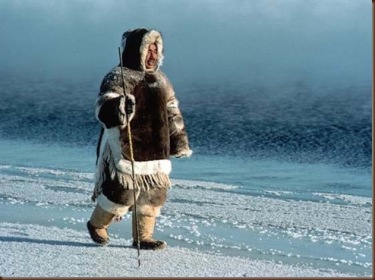Project 3 Instructions
When you’re inventing and composing an argument–which is what you’ll be doing in Project 3–knowledge of stasis theory will help you figure out exactly where and to what extent you disagree with other thinkers on your topic, and will thus help you give a shape or structure–a clear logos–to the stances you wish to make throughout the paper.
Remember that there are four main stasis forms:
- disagreement over definition
- disagreement over evaluation
- disagreement over causality
- disagreement over the nature of a proposal
We’ll cover proposals and causality next time. Today, we’ll cover definition and evaluation.
The Definition Stasis
Let’s pretend that you’re writing an argumentative essay about animal cruelty and its relation to the practice of wearing animal fur.
In order to make a good-quality argument–to determine credibly whether or in what situations wearing fur counts as animal cruelty–this paper would want to look at multiple examples of fur-wearing practices. Essentially, the goal would be to think about whether each of these examples meets the criteria of animal cruelty–and in the process, after interpreting those various examples, this paper would arrive at a conclusion about what the threshold is at which wearing fur becomes animal cruelty.
In order to do that, however, we would need to establish with our reader what animal cruelty is in the first place.
To start, we might scour the internet and UM library to do some research into animal cruelty laws. Some research questions guiding our search might be the following: Is there a national, federal definition of what counts as animal cruelty, i.e. according to federal law? Does the definition of animal cruelty (i.e. of what’s prosecutable as animal cruelty) change from state to state as a consequence of different state laws? Are there other contexts–besides the legal context–where we could look to discern the criteria people use to define animal cruelty?
To this end, get into groups of at least two people and, using the internet or any knowledge you already have, discover at least three criteria for what counts as animal cruelty. You can derive these criteria from federal or state laws, or possibly even from sources of a non-legal nature (e.g. philosophy/ethics). Work with purpose–you have 15 minutes. Write these down (I won’t be collecting them, but I will be asking your group to contribute.
Something counts as animal cruelty when it involves the following:
- Question of the animal being treated as a means to an end without respect: unethical means to an end
2. violation of duty to provide care (neglect)
3. killing/harming an animal for trivial purposes (no good reason for it)–in the case of intentional harm
4. depends on the kind of animal: domesticated
Now that we’ve got a basic working definition of animal cruelty (not a perfect definition, maybe, but one that can help us get our argument going, and one which we could return to and revise later), let’s see whether some particular examples match these criteria.


| Animal cruelty (broader category) | Kim wearing fur (particular example) |
| A) is the animal domesticated? | A) no |
| B) neglect? | B) maybe–depends on production process |
| C) was there a good reason to kill this animal? | C) probably no–the climate doesn’t necessitate; aesthetic luxury, not a necessity |
| D) | D) |
But what about this example?
| Animal Cruelty (broader category) | Native American wearing fur (main term) |
| A) is the animal domesticated? | A) probably not |
| B) neglect? | B) if not domesticated, you can’t neglect it |
| C) was there a good reason to kill this animal? | C) if yes, why? for survival purposes bc of climate; respectful (not wasteful) |
| D) | D) |
The Evaluation Stasis
Much like definitional arguments, evaluations also involve a criteria-match structure. In this case, however, you are not providing the criteria that a thing must meet to be defined in a category, but rather the criteria it must meet to be evaluated as a “good” or “bad” instance of whatever category it already belongs to.
There are three types of evaluation criteria:
- Practicality: Is something practical or impractical? Useful or useless? Feasible to implement, or unfeasible to implement? Possible and realistic, or impossible and unrealistic?
- Aesthetics: Is something beautiful or ugly? What kind of image does it send out to the world–is that image good/beneficial/constructive or bad/harmful/dangerous?
- Ethics: Is something right or wrong, just or unjust, fair or unfair, moral or immoral?
Example: NASA sending humans into space
Evaluate in terms of…
Practicality: increases potentially useful scientific knowledge; maybe impractical because it’s expensive; potential security benefits;
Aesthetics: source of national pride
Ethics: ethical because of its practicality; unethical bc putting human life at risk
Think back to our two “is wearing fur animal cruelty” examples:
Practicality: no–no necessity (luxury is by definition not necessary)
Aesthetics: the coat is pretty; but: puts out image of wealth
Ethics: unethical
versus
Practicality: yes
Aesthetics:
Ethics: yes



